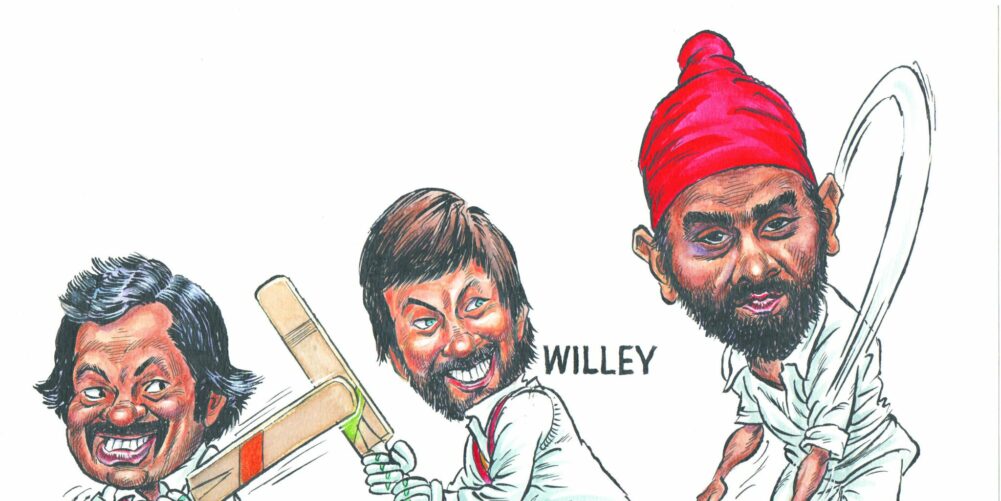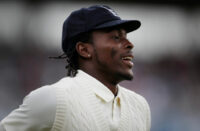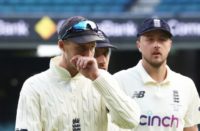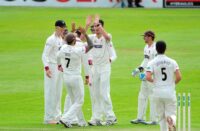Mushtaq’s mavericks stake their claim…
The summer of 1976 was a scorcher and it was also one when Northamptonshire played some of their hottest cricket. Paul Edwards looks back on a glorious time
Perhaps the best Press conference of the 2016 cricket season was also the least polished. Late in the evening of Saturday, August 20, Northamptonshire’s skipper, Alex Wakely, and his teammate, Josh Cobb, adjusted their eyes to the glare of achievement and talked about how their side had just won the T20 Blast.
There was nothing guarded about the players’ comments, nothing cautious and nothing diplomatic. Wakely hugged the cup while Cobb swigged his man-of-the-match champagne. The two cricketers joked and took selfies as they celebrated the Steelbacks’ second short-form triumph in four summers.
Not too many people gave a thought to events on the Lord’s balcony almost 40 years previously…
After Northamptonshire’s win last August, much analysis was devoted to how this invariably cash-poor county approaches T20 cricket. The best piece was written by my colleague, Tim Wigmore, who revealed how analysts and coaches at Wantage Road had adapted to their own purposes the methods described by Michael Lewis in his influential book, Moneyball. Put at their very simplest, these involve granular statistical analysis and the recruitment of less expensive but undervalued players in whom richer teams show little interest. Waistlines matter less than capability. “Never mind the width, assess the quality,” might be the motto.
Yet canny recruitment and an ability to upset the established order have long been characteristic of Northamptonshire’s cricket. Rarely was this more evident than on the morning of September 4, 1976, when a side containing three players from Durham, two Pakistanis, one Indian and cricketers hailing from five other English counties took on Lancashire in the final of the Gillette Cup. The nearest Northants had to a local was the Bedfordshire-born Wayne Larkins.
Lancashire travelled to Lord’s emboldened by their four victories in the six Gillette finals prior to 1976; Northants for their part had won diddly-squat in the 71 years since they entered the County Championship.
It was hardly a match to imperil the nerves, although the Pakistani seamer, Sarfraz Nawaz, confessed his knees were trembling when he made the runs that took Northamptonshire to a four-wicket win with 11 balls to spare. Early in the morning, John Dye had broken Barry Wood’s finger and Lancashire only managed 195-7 off their 60 overs because David Hughes reprised his big-hitting off Gloucestershire’s John Mortimore five years before and levied 26 off the innings’ final over, which was bowled by Bishan Bedi.
Yes, I know, they seem naïve times: an asking rate of just over three runs an over and a spinner who believed in giving the ball air bowling the final six deliveries of an innings. But Northamptonshire’s players were not troubled by such reflections a few hours later. Peter Willey, who had played in two of that summer’s Tests against a fearsome West Indies side, followed his 12 overs for 41 runs with a fine 65; then David Steele, who had gone the full 15 rounds against Clive Lloyd’s team, all but saw Northants home. And so another set of pundits was nonplussed.
Apart from skippering the side and receiving the trophy, Mushtaq Mohammad did not do very much in the final. Yet this was in curious contrast to the rest of a summer in which the Pakistani all-rounder’s 1,574 runs, 37 wickets and 20 catches had helped his side finish as runners-up in the County Championship for only the fourth time in their history. And Northamptonshire supporters at Lord’s also remembered that Mushtaq had taken over the captaincy in 1975 during a slightly mad period in which Northants managed to have four skippers in less than a fortnight.
Mushtaq had brought temporary stability to things, and he also happened to be one of the best cricketers in the world. Broader histories pondered the facts that he was one of five brothers to play first-class cricket, that he had apparently made his Test debut aged just 15 and that he was the first professional cricketer to play the reverse-sweep, although he had learned the shot from his brother, Hanif. What Northamptonshire supporters noticed in 1976 was Mushtaq’s facility to play the type of innings his team needed, and his ability to take useful wickets with his leg-spin and googly bowling.
However, Mushtaq was by no means the only fine spinner on Northamptonshire’s books during that sweltering summer when some hotels rationed their guests’ drinking water. Bedi’s powers may have been declining, but at his best, in the later months of the season, he could still justify Tony Lewis’ fine tribute.
“I have always thought that a great clockmaker would have been proud to have set Bedi in motion – a mechanism finely balanced, cogs rolling silently and hands sweeping in smooth arcs across his face,” Lewis wrote. “Yet it would be wrong to portray him as something less than human – all hardware and no heart – because he bowls with a fiery aggression which belies his genial nature.”
In addition to Bedi’s well-concealed belligerence, Mushtaq could also call on Willey’s off-spin and between them the three slow bowlers took 113 Championship wickets in a season whose climatic oddity is well recorded in Matthew Engel and Andrew Radd’s history of the county club: “Even the gods indicated something strange was afoot. It was the hottest, driest cricket season of the century. By midsummer every ground in the country was Australia-dry and the outfield drains were visible beneath the frazzled grass.”
But Willey was much more than a useful off-spinner on dry wickets. When chronic knee injuries permitted, he typified the resilient if impassive cricketer any good county values and it was entirely right that the England selectors decided his unyielding courage was just what was needed to take on the West Indian fast bowlers. His crouching square-on stance may have appalled the aesthetes, but one imagines Willey didn’t give a monkey’s. He scored 904 runs in 22 Championship innings for Northamptonshire in 1976 and his 370-run partnership with Roy Virgin against Somerset, Virgin’s former team, set a new county record for the fourth wicket. Bedi’s 6-71 sealed an innings win.
Yet it was not a spinner who bowled the most overs or took the most wickets for Mushtaq’s side in 1976. That responsibility and honour fell to the fast-medium bowler, Sarfraz, whose return of 82 wickets was the best in the land. His ability to swing the ball and cut it both ways helps to explain why all Northamptonshire’s nine wins were achieved by bowling their opponents out twice, and this in a season when the first innings was restricted to 100 overs. When balls took thin edges, George Sharp was the most reliable of wicketkeepers – his 68 victims making him the most successful gloveman in the country.
And Northants did not achieve their second place in the final table simply by hammering the weaker counties. The top four teams in 1975 had been Leicestershire, Yorkshire, Hampshire and Lancashire. Mushtaq’s side lost none of their six games against that quartet and won four of them with some ease. The bowling of Sarfraz and Dye on the first morning went a long way towards deciding the home matches against Leicestershire and Hampshire before Bedi returned match figures of 10-82 to see off Yorkshire in the season’s farewell at Scarborough.
It was, then, both the hottest and the most successful season in Northamptonshire’s history. While they rarely threw down a serious challenge to the champions, Middlesex – whose record included two more victories – a Gillette Cup win meant a lot to the county which had defeated only Cambridgeshire in 60-over cricket since 1968. So the spectators who celebrated that victory over Lancashire could hardly have anticipated that within a year the team that had secured Northamptonshire’s first honour would be broken up, with Bedi and Dye being the first to be released before Virgin and Mushtaq went, too, the latter resigning the captaincy before it was taken from him and informing the chairman of the selection committee where he could put the job. Having previously signed for Kerry Packer’s World Series Cricket, he played out the rest of the 1977 season and scored a century against Essex in his penultimate innings for Northamptonshire, a poignant echo of the summer in which his wristy batting had so often sustained his side.
There were to be more honours for Northants in the following years: a Benson & Hedges triumph in 1980, and a NatWest Bank Trophy win in 1992 – but nothing as oddly glorious as 1976 when the county’s 17-man Championship squad included just one locally-born cricketer, Brian Griffiths, who played one match and took a single wicket.
Northants, Somerset and Gloucestershire are the only counties never to have won the Championship, and remedying that situation is probably a long-term goal for officials at Wantage Road. For the moment, they are concentrating on maximising their resources, paying their bills and recruiting far more shrewdly than some much wealthier counties. Delve back into the county’s history and you will find that it was often thus…
This piece originally featured in The Cricket Paper, February 17 2017
Subscribe to the digital edition of The Cricket Paper here












